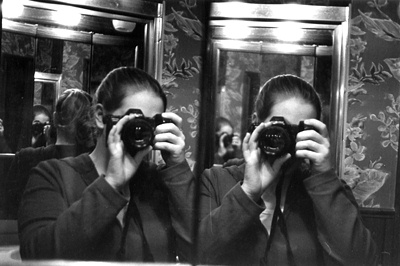All Nonfiction
- Bullying
- Books
- Academic
- Author Interviews
- Celebrity interviews
- College Articles
- College Essays
- Educator of the Year
- Heroes
- Interviews
- Memoir
- Personal Experience
- Sports
- Travel & Culture
All Opinions
- Bullying
- Current Events / Politics
- Discrimination
- Drugs / Alcohol / Smoking
- Entertainment / Celebrities
- Environment
- Love / Relationships
- Movies / Music / TV
- Pop Culture / Trends
- School / College
- Social Issues / Civics
- Spirituality / Religion
- Sports / Hobbies
All Hot Topics
- Bullying
- Community Service
- Environment
- Health
- Letters to the Editor
- Pride & Prejudice
- What Matters
- Back
Summer Guide
- Program Links
- Program Reviews
- Back
College Guide
- College Links
- College Reviews
- College Essays
- College Articles
- Back
Tips for the Budding Photographer
Photography is one of those subjects that we all know something about, but when it comes to understanding the mechanics of serious photography, many are clueless. Whether it be f-stop, aperture, ISO, focal length, or depth of field, photography is both a technical and creative art form. Technical in the sense that it requires knowledge of how to operate a camera, how to decide upon the best lenses, and how to process images in editing software such as Adobe Lightroom or Apple’s Aperture. Creative in the sense that it requires an artistic eye and the ability to recognize a good shot.
Although we are now in an age where film has become a collectors item, a seemingly ancient relic, much is still the same since the days Ansel Adams was shooting his iconic photographs at Yosemite. Fundamental concepts of how to frame a shot, or how to artistically use depth of field have not changed. What has changed is the post-processing phase of photography ; photographers used to spend hours developing in the darkroom with the potent scent of MICRODOL permeating throughout the air , but today we do all of this digitally.
On the consumer level, there are excellent programs available such as Apple’s iPhoto image editing software, bundled with the iLife suite, and Adobe’s Photoshop Elements. Both of these programs allow for easy management of photos, with some limited capability for retouching and editing. On the higher end, two programs dominate, Adobe Lightroom and Apple’s Aperture. These programs allow for excellent photo management and organization, plus some very advance and useful post-processing features such as local-adjustments, dodge and burn, plus the capability of high dynamic range imaging with 3-rd party plug-ins.
Perhaps the best way to start learning more about photography is to purchase a single-lens reflex camera. These cameras allow for interchangeable lenses, better manual control, and an overall more satisfying experience. Originally quite pricey, entry-level digital single-lens reflex (DSLR) cameras have become relatively affordable, now in the 500-1000 dollar range. The popular Canon Rebel X line of DSLR cameras and the Nikon D40 or D3000 are excellent choices for a the budding photographer. Of course, the most important aspect of photography is quality lenses. Many professional photographers will tell you that it is not the body that you should invest in, but the glass. It is usually the case that lenses will long outlast the camera body, which will most likely be refreshed every few years, considering the rapid pace at which technology evolves. This means that when you purchase a Canon camera, you are investing not only in a camera body, but also in their system of lenses, which unfortunately are not compatible with other manufacturer’s lens systems. So in effect, you are locked into one brand after you start seriously purchasing lenses.
In recent years, the so called “Megapixel Myth” has been a chief strategy used by camera manufacturers to make consumers believe that the most important factor in judging a camera’s image quality is its megapixel number. This is simply not true, and has misled many consumers into believing that more megapixels are always better. The true determining factor in camera image quality is the size of the image sensor, the microprocessor, usually a charge-coupled device(CCD) or more recently a CMOS sensor, that converts analog light into digital data that can be interpreted by the camera. Point-and-shoot cameras, which have become nearly ubiquitous in recent years, have a very small censor which leads to poor low-light performance and fairly inaccurate color reproduction. DSLR's feature much larger image censors, which range anywhere from a Four Thirds format to a 33mm full-frame censor on the higher end DSLR’s. ISO is another thing to consider when purchasing a camera. A higher ISO allows for better performance in situations that lack sufficient light. Considering the aforementioned factors when purchasing a camera will allow for a wiser, more-informed decision.
Although the tips above are essential to mastering the art of photography, no single thing will improve you skills greater than simply shooting as frequently as possible. That means devoting time every weekend to shooting photos. A good way to keep yourself going is to assign yourself a photographic assignment . This could be something as simple as a word, maybe “Dog”, or a more complex theme. You simply try and photograph something that fits the assignment, which makes the process quite enjoyable. It is a cliché, but practice does indeed make perfect. In his book Outliers, sociologist Malcolm Gladwell reinforces this proverb by making the assertion that it takes 10,000 hours to become great at something. One can certainly dispute this, but there is definitely no harm in striving for this goal.

Similar Articles
JOIN THE DISCUSSION
This article has 0 comments.
